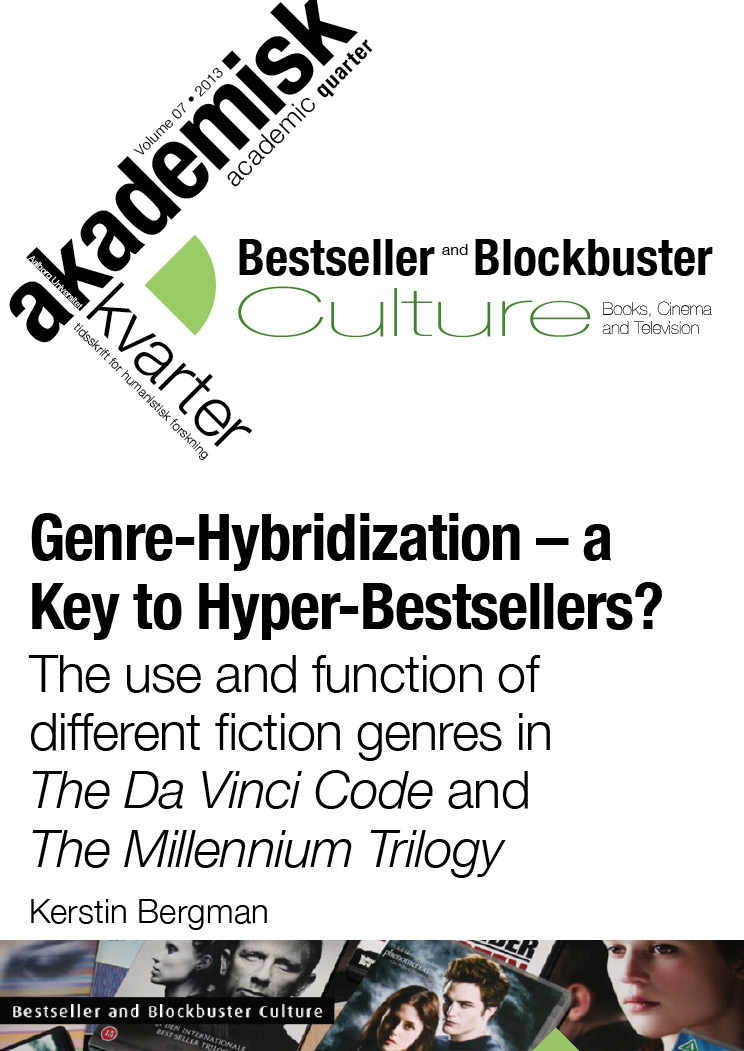Abstract | Abstract
The majority of the novels that during the first decade of the 2000s became hyper-bestsellers share one thing in common: They tend to be genre-hybrids, mixing several different, often popular, fiction genres. This is true for Harry Potter, The Da Vinci Code, Twilight, and a number of other hyper-bestseller phenomena of recent years. The thesis of this article is that genre-hybridity is a fundamental feature that contributes to a novel’s success by causing it to attract a larger and more diverse audience, and in so doing makes it stand out from most “regular” bestsellers.
In this article, the concept of the hyper-bestseller is introduced and outlined, followed by a comparative analysis of the use of different fiction genres and sub-genres in two of the most successful hyper-bestsellers of recent times, both of which exhibit strong links with the crime fiction tradition: Dan Brown’s The Da Vinci Code and Stieg Larsson’s The Girl with the Dragon Tattoo. The two novels are found to share many genre-related features, in particular, their dynamic detective duos, feminist agendas, anti-authoritarian attitudes, political criticism, exoticism, and religious elements. A majority of the shared genre conventions are also found to enable a strong sense of reader identification with the detective characters.
